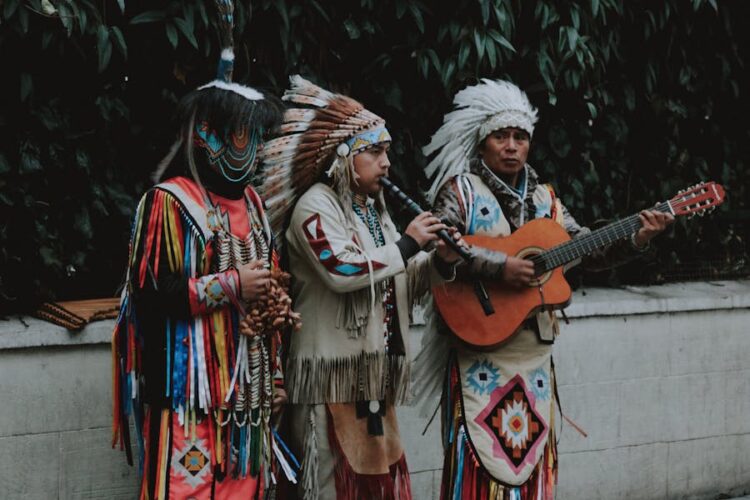The topic of reparations for Native Americans is both complex and multifaceted. Many wonder, do Native Americans get reparations? To understand this, we must delve into the history, policies, and current status of reparations for Native American communities. Over the years, various forms of compensation have been provided, but the question remains: are they enough to address the historical injustices faced by Native Americans? This article will explore the different aspects of reparations, including historical treaties, federal policies, and modern efforts. By examining these elements, we can gain a clearer understanding of the reparations provided to Native Americans and the ongoing challenges they face.
Do Native Americans get reparations?
Yes, Native Americans receive various forms of compensation, including land settlements, financial payments, and social services. These reparations stem from historical treaties and federal policies aimed at addressing past injustices. However, many argue that these efforts are insufficient and do not fully compensate for the extensive harm endured by Native American communities.
Historical Context Of Reparations
The history of reparations for Native Americans dates back to the signing of treaties between Native tribes and the US government. Many of these treaties involved land cessions in exchange for compensation and promises of protection. However, these agreements were often broken or inadequately fulfilled by the government, leading to significant loss and hardship for Native communities.
During the 19th and early 20th centuries, policies such as the Indian Removal Act and the establishment of reservations further marginalized Native Americans. These actions resulted in the loss of ancestral lands, cultural disruption, and economic challenges. In response to these injustices, Native Americans have long sought reparations and redress for the wrongs committed against them.
Efforts to address these historical grievances have included legal battles and advocacy for compensation. Various court cases and legislative acts have aimed to provide financial settlements and return lands to Native tribes. Despite these efforts, many Native Americans feel that the reparations received are insufficient to address the enduring impacts of historical injustices.
Federal Policies And Programs
Treaties and Land Settlements
Many treaties signed between Native American tribes and the US government included provisions for land settlements and financial compensation. However, these treaties were often violated, leading to legal disputes and calls for reparations. Over the years, some tribes have successfully reclaimed lands or received financial settlements through litigation.
The Indian Claims Commission
Established in 1946, the Indian Claims Commission (ICC) aimed to address grievances related to broken treaties and land claims. The ICC provided a platform for Native tribes to present their cases and seek compensation. While the commission resolved many claims, the compensation awarded was often seen as inadequate compared to the value of the lands lost.
The Indian Reorganization Act
The Indian Reorganization Act of 1934 marked a significant shift in US policy towards Native Americans. The act aimed to restore self-governance and promote economic development within Native communities. It included provisions for the return of some lands and financial assistance to support tribal governments and businesses.
Modern Federal Programs
In recent decades, various federal programs have been established to support Native American communities. These programs provide funding for healthcare, education, housing, and economic development. While these initiatives aim to improve the quality of life for Native Americans, challenges remain in ensuring equitable access and addressing historical disparities.
Contemporary Efforts And Challenges
- Legal Battles: Native American tribes continue to pursue legal avenues to seek reparations and redress. Recent court cases have resulted in significant financial settlements and the return of lands to tribes.
- Economic Development: Efforts to promote economic development within Native communities include initiatives to support tribal businesses, infrastructure projects, and job creation. These efforts aim to enhance economic self-sufficiency and improve living standards.
- Cultural Preservation: Reparation efforts also focus on preserving Native American cultures and traditions. Funding for cultural programs, language revitalization, and the protection of sacred sites are crucial components of these efforts.
- Health and Education: Access to quality healthcare and education remains a priority for Native communities. Federal and tribal programs aim to address disparities in these areas and improve overall well-being.
- Advocacy and Activism: Native American advocates and activists continue to push for comprehensive reparations that fully address historical injustices. These efforts include lobbying for policy changes, raising awareness, and promoting solidarity with other marginalized groups.
Impact Of Reparations On Native Communities
Reparations have had a mixed impact on Native American communities. Financial settlements and land returns have provided some tribes with resources to support their development and well-being. These reparations have enabled tribes to invest in infrastructure, education, healthcare, and cultural preservation.
However, many Native Americans argue that the reparations provided are insufficient to fully address the historical and ongoing injustices they face. The loss of ancestral lands, cultural disruption, and economic marginalization have left deep scars that are not easily healed. Additionally, disparities in the distribution and effectiveness of reparations contribute to ongoing challenges.
The impact of reparations varies across different tribes and communities. While some have successfully leveraged reparations to achieve significant progress, others continue to struggle with limited resources and systemic barriers. Understanding these impacts requires a nuanced examination of the diverse experiences of Native American communities.
Future Directions For Reparations
Policy Reforms
To address the limitations of current reparation efforts, policy reforms are necessary. These reforms should focus on ensuring equitable distribution of resources, enhancing accountability, and addressing the root causes of historical injustices. Engaging Native American leaders and communities in the policymaking process is crucial to developing effective and sustainable solutions.
Expanding Reparations
Expanding reparations beyond financial compensation is essential. This includes initiatives to restore cultural heritage, protect sacred sites, and support language revitalization. Comprehensive reparations should also address social determinants of health, education, and economic opportunity to create a holistic approach to justice.
Building Partnerships
Building partnerships between Native American tribes, government agencies, and private sector organizations can enhance the effectiveness of reparation efforts. Collaborative approaches can leverage resources, expertise, and support to address complex challenges and promote sustainable development.
Advocacy and Education
Raising awareness and advocating for reparations are ongoing efforts. Educating the broader public about the history and experiences of Native Americans is essential to garnering support for reparation initiatives. Advocacy efforts should also focus on promoting solidarity with other marginalized groups to build a united front for justice.
Path Forward And Reflection
- Historical Context: Understanding the history of reparations for Native Americans provides a foundation for addressing current challenges and future directions.
- Federal Policies: Federal policies and programs have played a significant role in shaping reparation efforts. However, their effectiveness and limitations must be critically examined.
- Contemporary Efforts: Ongoing efforts to seek reparations and support Native communities highlight the need for continued advocacy and reform.
- Impact on Communities: The impact of reparations varies across different tribes and communities, underscoring the need for tailored approaches and equitable distribution of resources.
- Future Directions: Comprehensive and collaborative approaches are essential to advancing reparation efforts and promoting justice for Native American communities.
Conclusion
In conclusion, the question “do Native Americans get reparations?” is complex and requires a nuanced understanding of history, policies, and current efforts. While various forms of compensation have been provided, the effectiveness and sufficiency of these reparations remain debated. Understanding the diverse experiences and challenges faced by Native American communities is crucial to advancing reparation efforts. Future directions should focus on comprehensive and equitable approaches that address historical injustices and promote sustainable development. By continuing to advocate for justice and support for Native Americans, we can work towards a more equitable and just society.
FAQs
Do Native Americans receive financial reparations?
Yes, Native Americans receive financial reparations through land settlements, legal settlements, and federal programs. However, the sufficiency of these reparations is often debated.
What are some key federal policies related to reparations for Native Americans?
Key federal policies include historical treaties, the Indian Claims Commission, and the Indian Reorganization Act. These policies aim to address historical grievances and support Native communities.
How do reparations impact Native American communities?
Reparations provide resources for economic development, cultural preservation, and social services. However, disparities in distribution and effectiveness remain challenges.
What are some contemporary efforts to seek reparations for Native Americans?
Contemporary efforts include legal battles, economic development initiatives, cultural preservation programs, and advocacy for policy reforms.
What are future directions for reparations for Native Americans?
Future directions should focus on policy reforms, expanding reparations beyond financial compensation, building partnerships, and promoting advocacy and education.







